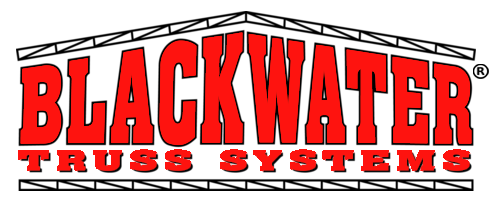Angle vs. Square Tube
A practical buyer’s guide from Blackwater Truss Systems
Quick Take
If you’re building a pole barn and weighing angle iron against square tube trusses, here’s the short version:
- Best overall value: Angle iron trusses typically deliver a lower installed cost with excellent strength and long service life.
- When square tube shines: Applications with unusual torsion demands, heavy point loads, or architectural exposure where closed members are preferred.
Bottom line: For most agricultural, storage, and light commercial pole barns, angle iron trusses are the cost‑smart, durable choice.
Why Angle Iron Often Costs Less
Material efficiency
Angle profiles put steel where it is most effective for carrying loads, avoiding the extra, unused interior steel present in closed tube sections.
Faster fabrication
Angles are easy to cut, fit, and weld with simpler joints and fewer coping operations compared to tube-to-tube joints. Reduced shop time = lower price.
Simpler coatings
Because angles are open profiles, coatings (paint, powder, or hot‑dip galvanizing) can be applied and inspected directly—no hidden interiors.
Freight savings
Comparable strength at lower weight can reduce freight cost per square foot of building area.
Takeaway: These factors commonly combine to produce a lower delivered truss cost and an overall lower installed cost for angle iron trusses.
Strength & Engineering Considerations
Structural performance
Both angle and tube trusses can be engineered to meet your span, load, and code requirements. Angle trusses perform well in axial load paths typical of roof truss webs and chords, while square tube members provide greater torsional rigidity and can be advantageous where significant out‑of‑plane or eccentric loads exist.
Connections
Angle iron uses straightforward fillet welds at accessible joints, making inspection simple. Square tube requires coping or fish‑mouths and more complex welding details.
Bracing
Angle trusses typically use standard purlin bracing patterns. Tube trusses may allow slightly wider spacing in certain designs, but this depends on the project.
Deflection & vibration
Both systems are engineered to your specified L/Δ limits. For typical roof live loads and spans in pole barns, angle iron satisfies serviceability without premium member sizes.
Durability & Maintenance
Corrosion control
Angle iron exposes all steel surfaces, making it easier to clean, coat, and inspect over time. There are no sealed interiors to trap moisture. Square tube is closed; if unsealed or vented improperly, condensation can cause internal corrosion that is difficult to detect.
Coating options
Angle profiles allow for consistent coating coverage whether shop‑primed, painted, or hot‑dip galvanized. Tube members need careful venting for galvanizing.
Service access
Open profiles make future inspections and repairs more straightforward.
Cost-of-Ownership Advantages (Angle Iron)
- Lower upfront material + fabrication cost for most barn spans.
- Reduced coating complexity and easier inspection, lowering maintenance risk.
- Potentially lighter shipments and simpler handling on site.
- Standardized details shorten erection time for experienced crews.
Where Square Tube May Be Preferred
Square tube trusses may be worth considering for projects with high architectural exposure where a smooth, closed profile is desired, or in special cases with high torsion, large eccentric equipment loads, or cantilevers. They may also be used where hidden wiring or conduit is needed inside members, though this is rare in pole barns.
Example Comparison (Typical Pole Barn Roof Truss)
In most agricultural or storage use cases with common wind and snow loads, spans from 24'–60', and standard purlin spacing:
- Upfront cost: Angle iron is generally lower due to material efficiency and faster fabrication, while square tube is often higher because of more steel per foot and more complex joints.
- Weight per truss: Angle iron designs are often lighter at a given capacity, while tube trusses tend to be heavier for the same axial strength.
- Coating & inspection: Angle iron is simple to galvanize or paint thoroughly, while tube trusses hide interior surfaces and require careful venting for galvanizing.
- Torsional rigidity: Angle trusses provide adequate rigidity for standard roof systems, while square tube offers more torsional resistance in special cases.
- Field repairs: Angle trusses are easier to access for welding and touch‑ups, while tube trusses can be more involved to repair.
- Lead times: Angle trusses are typically available sooner, while tube trusses may have longer fabrication times.
What You Get with Blackwater Truss Systems
- Stamped engineering for your jurisdiction (if purchased)
- Material certifications and clear spec sheets
- Coating options to match your environment (primer or hot‑dip galvanize)
- Standard connection details for posts, purlins, and bracing
- Responsive lead times and coordinated delivery
Make an Informed Choice
If your priority is best cost for code‑compliant performance, angle iron trusses are usually the smart buy. If your project has non‑standard torsion or architectural requirements, square tube may fit better. Either way, our engineers will size, detail, and certify the truss that meets your goals.
Where do you want to go?
-
-
-
Our Products
All Products PageReady to make a purchase? Click here to be brought to our Products Page.
